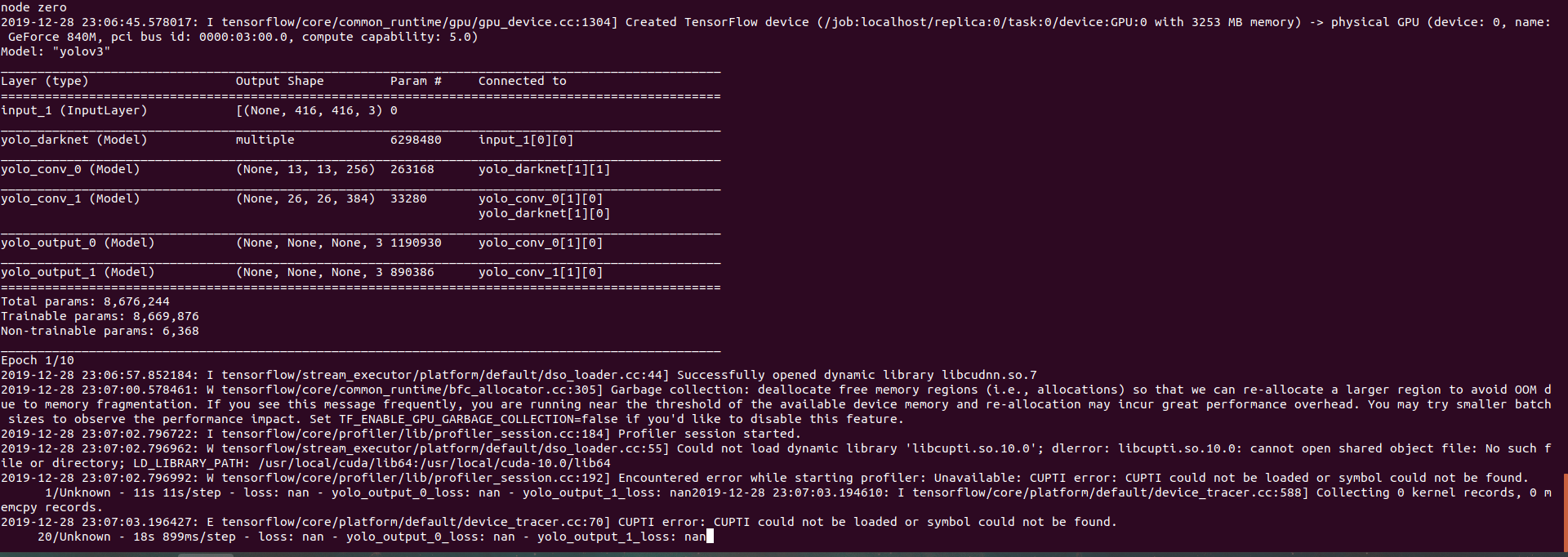Hi @miladfa7,
I experienced this problem when training with 1 class too. However, I had my labelled images in separate tfrecords rather than 1 large tfrecord.
This issue arises because certain data(labelled images) are "corrupted"(which causes the loss to go to NAN). In my case, since I had labeled images in separate tfrecords, certain tfrecords were "corrupted". I noticed this because some tfrecords caused nan values while others didn't. So what I would suggest is having all of your labeled images in individual tfrecords. Then create a script that would iterate through each tfrecord(in other words , run the training on 1 tfrecord at a time) to find the corrupted tfrecords. In my case, there weren't a lot of corrupted tfrecords(around 30 for 2000 images). So I would suggest first iterating over batches of tfrecords(e.g. 25 or 50 at a time) and then locate all of the batches that give an NAN loss value. After you have located all of the file batches that give NAN, iterate through all of them 1 by 1 to find the corrupted files. This worked for me, I got rid of the corrupted tfrecords, and the training went fine. I haven't figured out why certain tfrecords are "corrupted" but i just got rid of the ones that give NAN loss.
I would suggest looking at #103 and #86 for more info.
Also if you are training with yolo tiny can you update me on the mAP and accuracy of your algorithm. I only get around a 40 percent accuracy with 5000 images. I get a 65 percent mAP with 0.3 iou.
 The problem is that the bounding box is not drawn correctly...
I normalized the bounding box but didn't normalize the images. Could this be the problem?
The problem is that the bounding box is not drawn correctly...
I normalized the bounding box but didn't normalize the images. Could this be the problem?



I execute this command
python3 train.py --dataset ./train.tfrecord --classes ./data/voc2012.names --num_classes 1 --mode fit --transfer darknet --batch_size 8 --epochs 10 --weights ./checkpoints/yolov3-tiny.tf --weights_num_classes 80 --tinybut I get is this error message while training("nan values" ).
I only have 1 class in my training dataset.(Drone detection)
Do this error is related to convert txt to tfrecord? I converted my dataset based on this "https://github.com/zzh8829/yolov3-tf2/issues/41" please help me, thanks.